Goals and Objectives
- By completing this module, you should be able to:
- Estimate the amount of topical medication needed for therapy based on frequency of application and body surface area involved
- Choose appropriate strengths of topical steroids based on age, body location and severity of dermatitis
- List side effects of prolonged use of topical steroids
- Discuss the basic principles of medications used to treat acne
- Discuss the basic principles of topical antifungals, oral antihistamines and topical psoriasis medications
Principles of Dermatologic Therapy
- The efficacy of any topical medication is related to:
- The active ingredient (inherent strength)
- Anatomic site
- The vehicle (the mode in which it is transported)
- The concentration of the medication
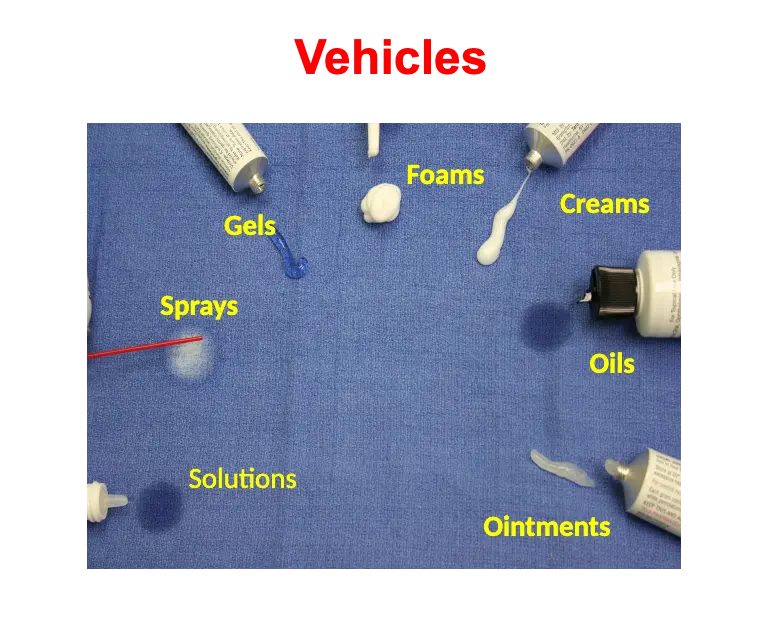
1- Ointments
- occlusive; greasy has lubricant effects (e.g. Vaseline):
- USE for smooth, non-hairy skin; dry, thick, or hyperkeratotic lesions
- AVOID on hairy and intertriginous areas as armpits, groin, pannus)
2- Creams
- Vanish when rubbed in:
- Less greasy than ointment, has drying effects; not occlusive, can sting, more likely to cause irritation
- USE for acute exudative inflammation & intertriginous areas
3- Lotion (pourable liquid): less greasy, less
- occlusive; may contain alcohol (drying effect on
- oozing lesion); penetrate easily, little residue
- USE for hairy areas
4- Foams (cosmetically elegant):
- spread readily, easier to apply; more expensive
- USE for hairy areas; inflammation
5- Sprays: Aerosols (rarely used), pump sprays
6- Oils:
- less stinging than lotions or solutions
- USE for the scalp, especially for people with coarse or very curly hair
7- Gel (jelly-like):
- may contain alcohol, greaseless, least occlusive; dry quickly
- USE for acne, exudative inflammation (e.g. acute contact dermatitis); on scalp/hairy areas without matting
Medication Costs
- Topical medications can be very expensive
- They are not all covered by insurance
- Over the counter (OTC) treatments are generally cheaper than prescriptions
- Generics are less expensive than brand name prescriptions
- It is helpful to know the costs of the medications you prescribe and be able to tell the patient in advance what they should expect to pay
Topical Prescriptions
What goes into a topical prescription?
- What goes into a prescription?
- Desonide cream 0.05% apply to affected area (face) BID PRN for scaling 15 Grams RF3
- Generic name
- Vehicle
- Concentration
- Sig
- Amount
- Refills
- Desonide cream 0.05% apply to affected area (face) BID PRN for scaling 15 Grams RF3
Common Types of Dermatologic Medications
Topical Corticosteroids
- Topical steroids produce an anti-inflammatory response in the skin
- They are effective for conditions that are characterized by:
- Hyperproliferation? psoriases
- Inflammation? eczema, psoriases
- Immunologic involvement? psoriases, bullous phemegoid
- provide symptomatic relief for burning and pruritic lesions? itching without cause
- Corticosteroids are organized into classes based on their strength (potency)
- Therefore, steroids within any class are equivalent in strength
- Strength is depends on the molecule, not the concentration.
- Know one steroid from each class that would be available to the majority of your patients (the generic in that class)
Topical Steroid Strength
| Potency | Class | Example Agent | Prescribed for |
|---|---|---|---|
| Super high | I | Clobetasol propionate 0.05% | potency (Class I) are used for severe dermatoses over nonfacial and nonintertriginous areas * Scalp, palms, soles, and thick plaques on extensor surfaces |
| High | II | Fluocinonide 0.05% | potency steroids (Classes II-V) are appropriate for mild to moderate nonfacial and nonintertriginous areas * Okay to use on flexural surfaces for limited periods |
| Medium | III – V | same as above | |
| Triamcinolone acetonide ointment 0.1% | |||
| Triamcinolone acetonide cream 0.1% | |||
| Triamcinolone acetonide lotion 0.1% | |||
| Low | VI – VII | steroids (Classes VI, VII) can be used for large areas and on thinner skin * Face, eyelid, genital and intertriginous areas | |
| Fluocinolone acetonide 0.01% | |||
| Desonide 0.05% | |||
| Hydrocortisone 1% |
Topical Steroid Strength
- Remember to look at the class not the percentage
- Note that clobetasol 0.05% is stronger than hydrocortisone 1%.
- When several are listed, they are listed in order of strength
- Note that triamcinolone ointment is stronger than triamcinolone cream or lotion because of the nature of the vehicle
Local Side Effects of Topical Steroids
- The higher the potency the more likely side effects are to occur.
- To reduce risk, the least potent steroid should be used for the shortest time, while still maintaining effectiveness
Local Side Effects of Topical Steroids
- Skin atrophy -side effects can be used for keloids treatment
- Telangiectasias
- Striae
- Acne
- Steroid Rosacea
- Hypopigmentation - may also treat hyperpigmentation
Local Side Effects of Topical Steroids
-
Striae
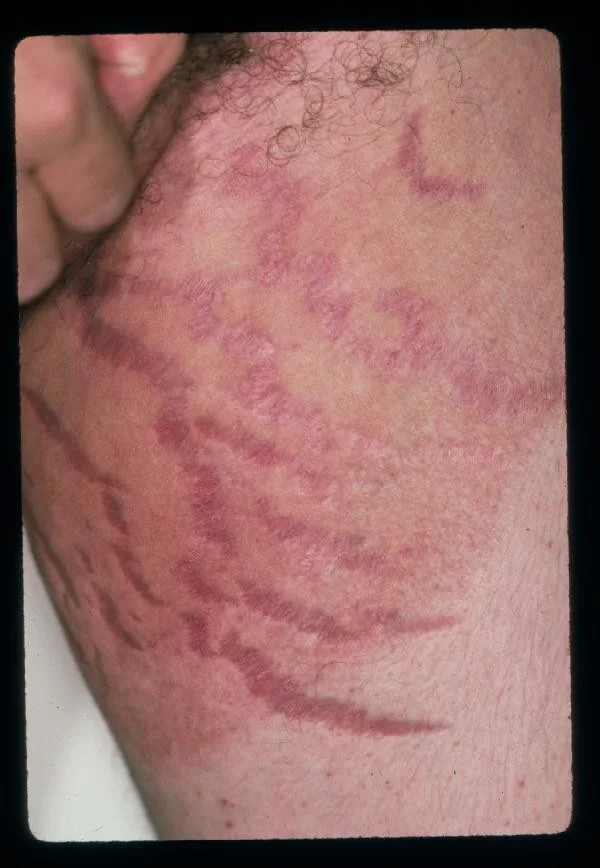
-
Skin Atrophy
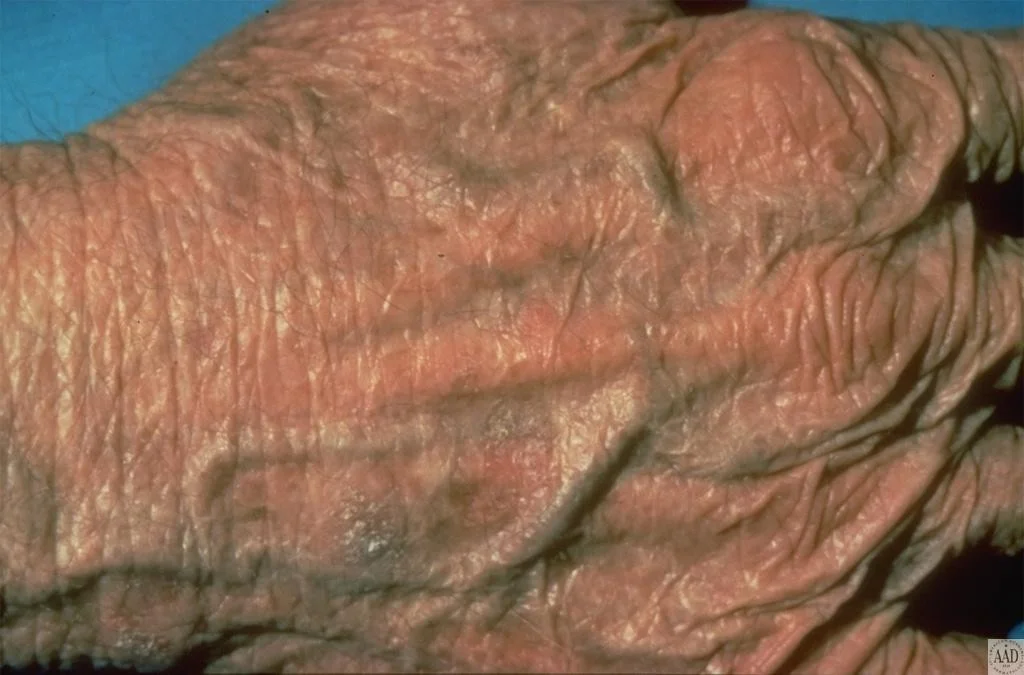
Local Side Effects of Topical Steroids
Hypopigmentation
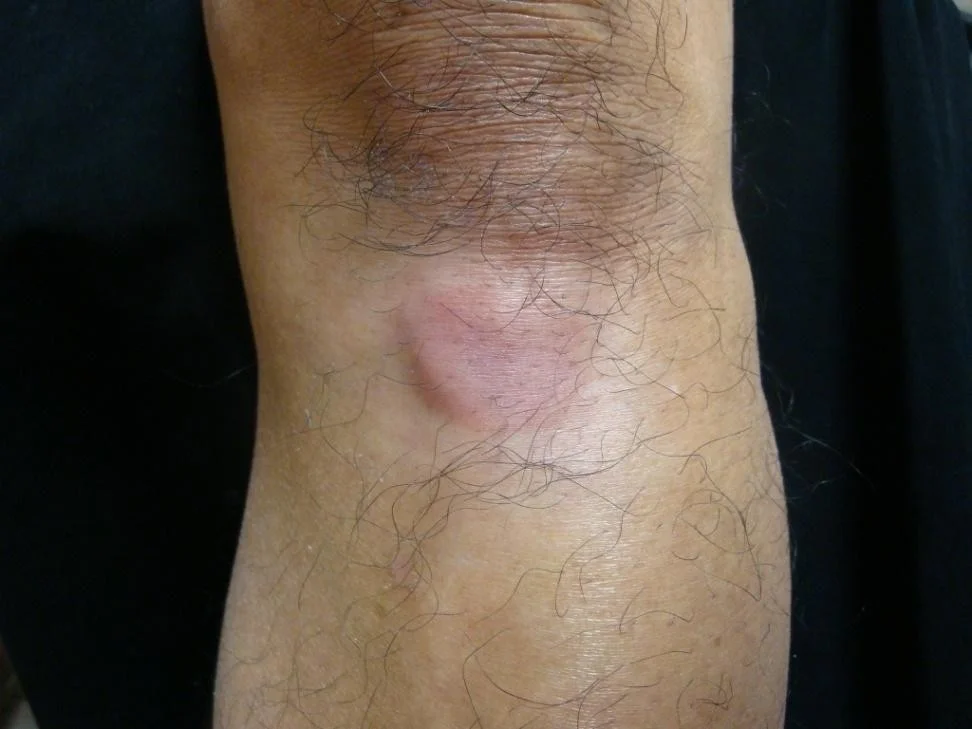
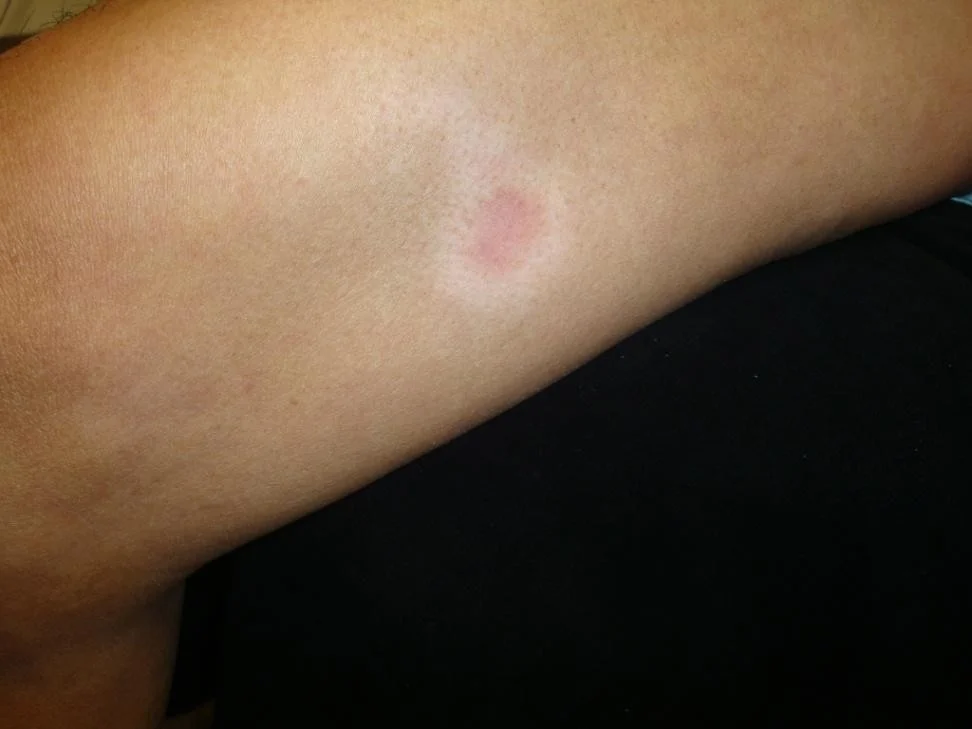
Systemic Side Effects of Topical Steroids
Systemic side effects are rare due to low absorption - They can include:
- Glaucoma (when steroid applied to the eyelid)
- Hypothalamic pituitary axis suppression
- Cushing’s syndrome
- Hypertension
- Hyperglycemia
- The higher the potency the more likely side effects are to occur
- To reduce risk, the least potent steroid should be used for the shortest time, while still maintaining effectiveness
Duration of Treatment
- Duration of treatment is limited by side effects
- In general:
- ✓ Super high potency: treat for <3 weeks
- ✓ High and Medium potency: <6-8 weeks
- ✓ Low potency: side effects are rare.
Treat facial, intertriginous, and genital dermatoses for 1-2 week intervals to avoid skin atrophy, telangiectasia, and steroid-induced acne
-
Stop treatment when skin condition resolves
- To avoid rebound/flares: taper with gradual reduction of both potency and dosing frequency every 2 weeks
-
If the patient does not respond to treatment within these guidelines, consider referral to a dermatologist